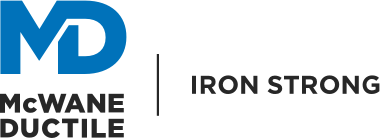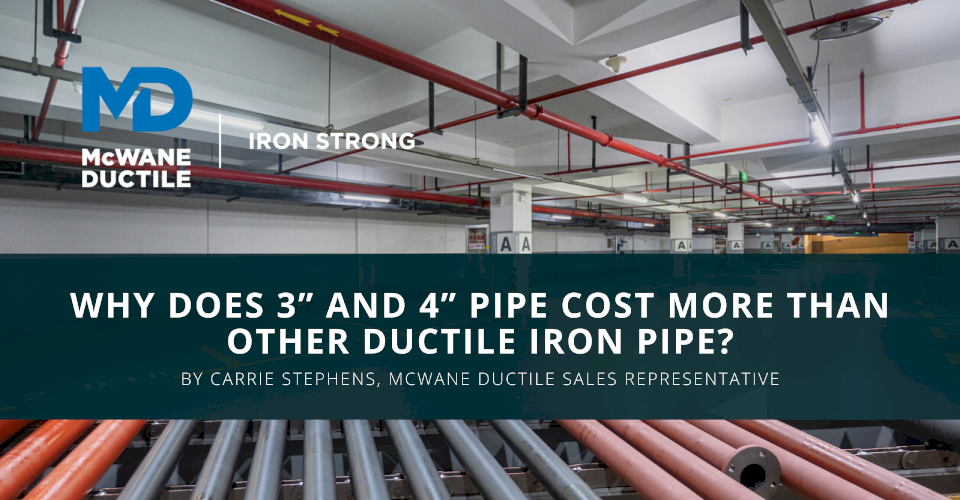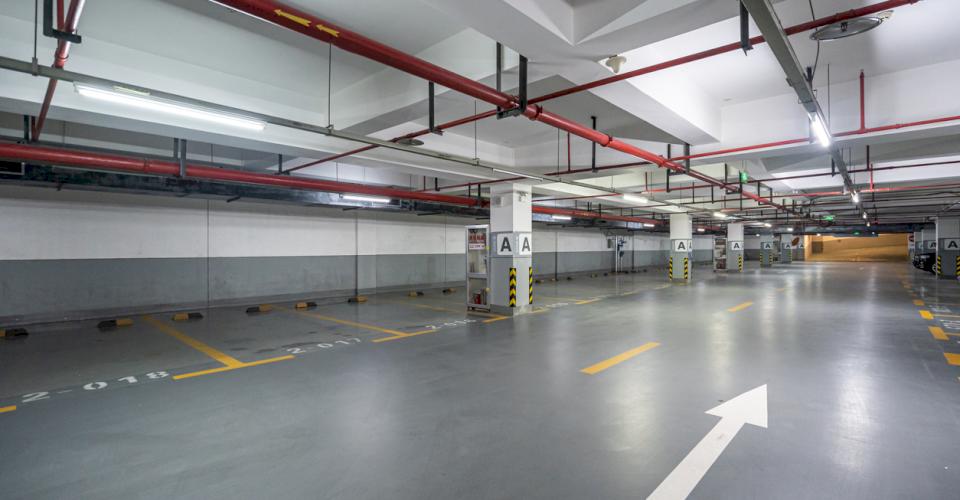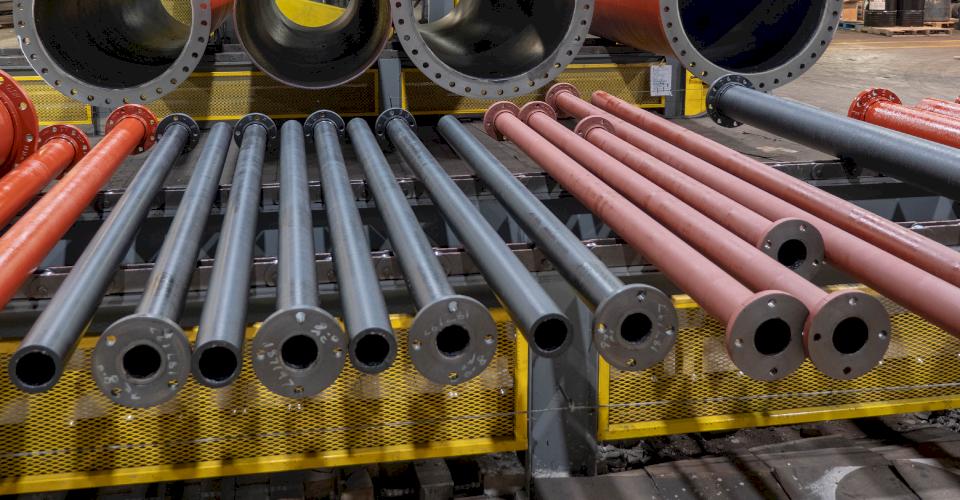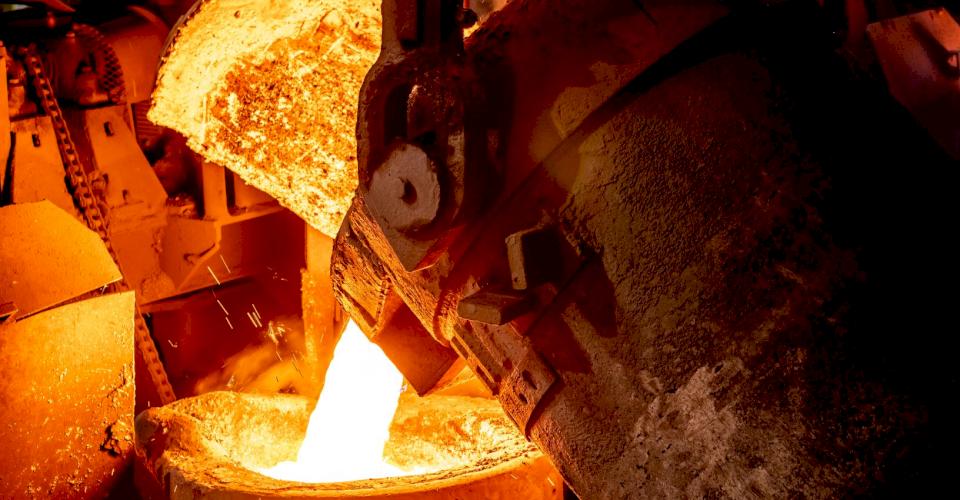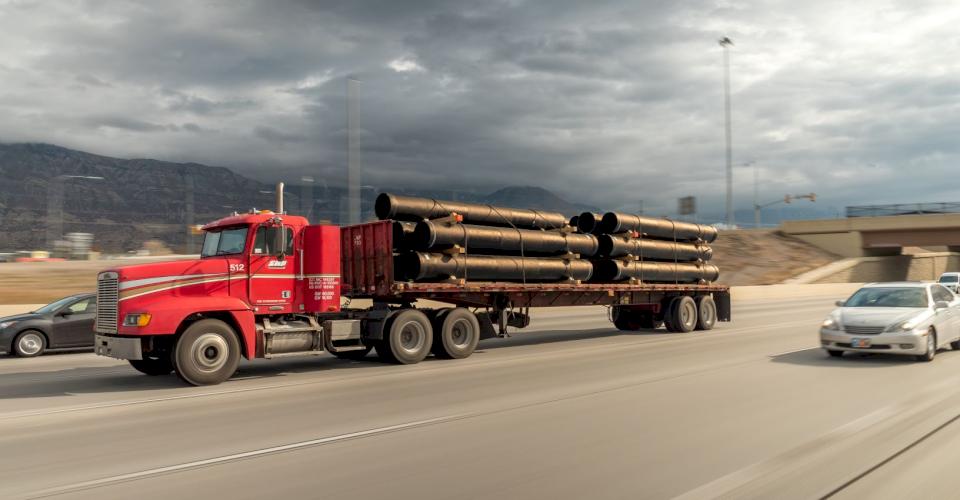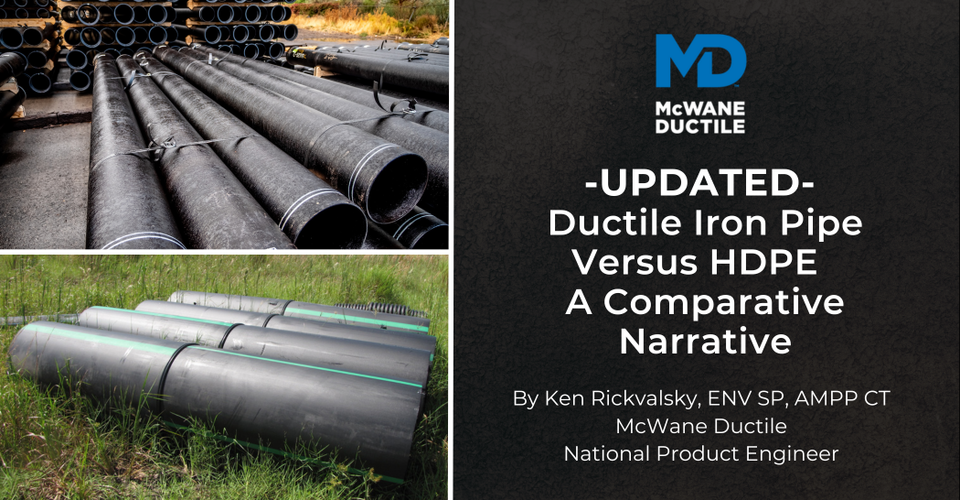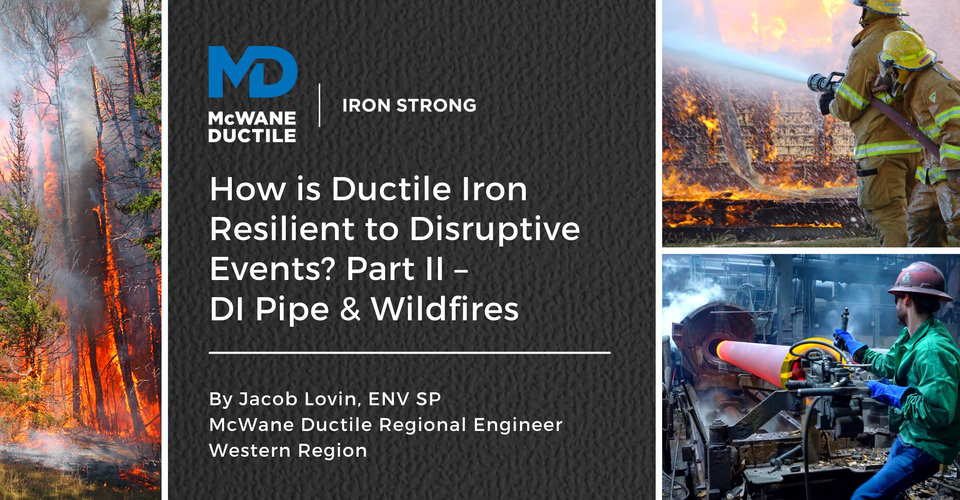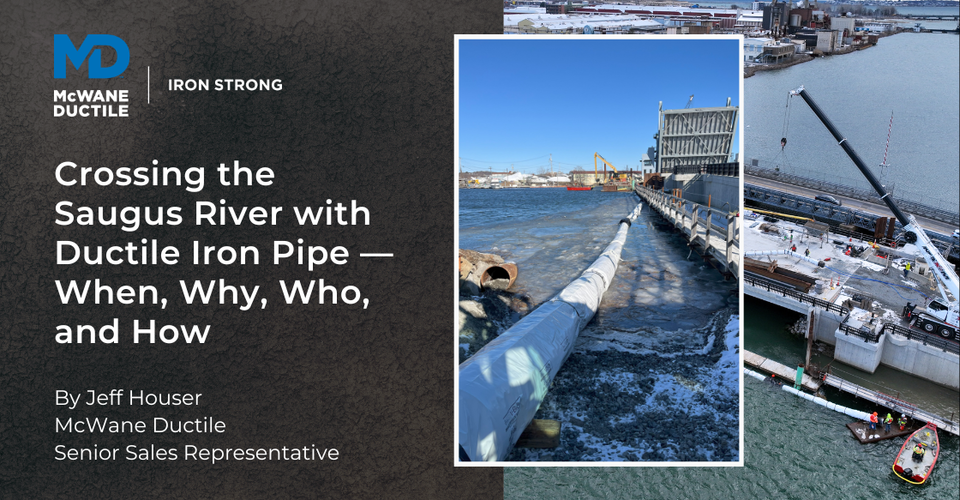A common question that many sales reps in the Ductile iron pipe (DI pipe) industry have heard over the years is, "Are you sure you’ve quoted the 3” and 4” pipe correctly?” Once that price is confirmed, the follow-up question from the customer is usually “Why in the world does it cost so much?” Well, there are many reasons for the higher cost, and in this Iron Strong Blog, we will offer some insight into that question.
Why Do We Even Manufacture 3" and 4" Pipe?
First, we will look at why we even make 3" and 4" DI pipe. Although the usages may have diminished over the years, there continues to be a demand for 3" and 4" DI pipe. Within our inventory system, however, many of these products are referred to as “C” items, which means they are not manufactured in large lots. These “C” items may only be produced periodically as “made to order” requirements, and this lower volume leads to increased manufacturing costs.
What Are The Typical Uses for 3" and 4" Ductile Iron Pipe?
Three-inch pipe is often fabricated for use in plant or industrial applications. Many times, these are above ground installations such as fire sprinkler systems in buildings or other structures like parking garages.
Four-inch pipe is also used in industrial applications but can be used for buried water or sewer lines as well. In buried installations, Ductile iron is simply the best choice in shallow cover or where there may be significant loads applied from traffic, for example. Both 3 and 4" are also an often-used size for Air Relief Valve assemblies or Blow-offs, which can either be connected by using a tee or via pipe to pipe weldments such as a Radial or Tangential outlet.
Due to its inherent strength and durability, Ductile iron is well suited for fire protection lines that safeguard critical infrastructure. Unlike some other materials, DI pipe is not affected by the heat generated from fires. Risking a multimillion dollar building by using substandard material may not be in the best interest of your customer or the public at large.
What Joint Types and Classes Are Available?
At McWane Ductile, we can cast 3” Ductile iron with either a Tyton® or Mechanical Joint bell. Pipe Classes available in 3” are limited to thickness Class 52 and 54 only. For 4” pipe, we can supply it as either Tyton, TR Flex, or Mechanical Joint. Available pipe classes for the 4” pipe run from Class 51 through Class 56.
Both the 3" and 4" pipe can also be provided as fabricated pipe with either flange by plain end or flange by flange. They may also be provided with a grooved end for Victaulic type coupling assembly. The minimum wall thickness for fabricated pipe is Class 53.
Now that you know the reasons why we still offer 3" and 4" pipe, let us take a closer look at why it is priced higher in relation to 6” or 8” Ductile iron pipe. It is all in the manufacturing process and related cycle times for production.
Unique Challenges When Manufacturing 3" and 4" Pipe
There are unique challenges in manufacturing 3" and 4” pipe that are not typically incurred with larger diameter pipe. The tooling required, including the ladles, chutes, troughs, and molds, is much smaller, so it requires very flowable iron. Increasing iron fluidity is achieved by increasing the iron temperature and changing the iron chemistry.
The increase in iron temperature is achieved by adding fuel, in the form of coke, in the cupola. Coke is a high-cost raw material that impacts the cost of manufacturing 3" and 4" pipe.
The change in iron chemistry for greater fluidity is accomplished by increasing the carbon and silicon content. Carbon, through the addition of coke and carbon anodes in the cupola, and silicon as an alloy addition in the ladle. Once again, coke, anodes, and silicon are high-cost raw materials impacting the manufacturing cost.
Cycle Times for Pipe Production
Cycle Time is generally considered the time it takes for the beginning to the end of a process. During the casting of 3" and 4" pipe, the cycle times are not dissimilar to that of 6" and 8" pipe as it essentially takes about the same total time to pour and cast the smaller pipe.
The Challenges Continue During the Cement-Mortar Lining and Seal Coat Process
In the cement lining process, these smaller diameters also affect cycle times, as the lance must be inserted slowly to avoid contact with the pipe, which could damage the pipe, the lining, or the lining equipment. The increased cycle times equate to slower production and increased labor costs.
The seal coat's application also requires that the lance run slowly to prevent damage to the cement lining or the painting equipment. As with the cement lining process, the increased cycle times slows production and raises labor costs.
The same holds true when lining the Ductile iron with Protecto 401™ Ceramic Epoxy lining, commonly used for sewer lines. Consequently, the epoxy lining is available in 4” only, as the 3” is simply too small.
The challenges in manufacturing 3" and 4" translates to a higher scrap rate, which drives up all cost components – materials, energy, and labor.
Transportation Costs of the Material
Another major factor impacting the cost of our 3" and 4" Ductile iron pipe is in transportation. McWane Ductile has manufacturing facilities in Provo, UT, Coshocton, OH, and Phillipsburg, NJ; however, McWane Ductile New Jersey is the only plant producing 3" and 4" pipe, and then it is shipped throughout the United States and Canada. Freight is factored into the overall cost of 3" and 4" pipe as well.
Need Assistance with Your Waterworks Project?
We have team members who’ve managed small and large water utility systems, served in engineering consulting firms, and bring decades of experience in solving field issues involving pipeline construction and operation. From design to submittal, to installation, we strive to provide education and assistance to water professionals throughout the water and wastewater industry.
Check Out All Our Digital Offerings
